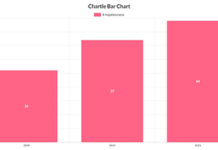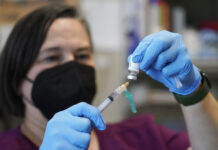AMERICAN HOSPITALS ARE flooded with sick patients, and not everyone there is battling Covid-19. Many people need blood transfusions—in fact, the American Red Cross estimates that someone in the U.S. requires a blood donation every two seconds. The country’s blood supply is also running dangerously low: About 30 percent of centers across the nation have a supply that could run out in one day or less and must be carefully managed. And more than half of all centers have less than a three-day stockpile for times of crisis.
That’s because the pandemic forced the cancellation of blood drives—three times as many were canceled in 2020 compared with the year before, according to the Red Cross. Collections at high schools and colleges dropped by 50 percent over that same period. If we don’t get more blood donors fast, we’re not going to be able to treat people with serious burns, those having heart surgeries and organ transplants, and those battling cancer.
But there is one easily implementable solution to the national blood-supply shortage that’s been available for years and could be a lifeline: allowing gay and bisexual men to donate freely. Right now in the U.S., gay and bisexual men (often referred to as MSM, or “men who have sex with men”) are not allowed to give blood if they’ve had sex with another man in the past three months. The same is true for women who’ve had sex with MSM.
Allowing MSM equal access to donate could increase the total annual blood supply by 2 to 4 percent, adding anywhere from 345,400 to 615,300 pints of blood each year, the Williams Institute at UCLA reported in 2014. Researchers estimated it would help save the lives of more than a million people, and experts agree this wouldn’t be putting anyone at additional risk of HIV—a fear that many scientists say needs to be put to rest. Ayako Miyashita Ochoa, lead author of the 2014 report, remains flummoxed as to why, seven years after pointing out the obvious benefit, the change hasn’t happened. “It is my opinion that we continue to have a real problem with laws and regulations based on fear rather than science,” she says.
The continuation of a MSM-specific barrier to giving is not only limiting the blood supply, it’s unnecessary and “rooted in homophobia,” explains Perry N. Halkitis, Ph.D., M.P.H., dean of the School of Public Health at Rutgers University. So far, the FDA has been reluctant to overhaul its policy, but as the need for fresh blood becomes ever more urgent, health and social-justice advocates are pumping new energy into the fight.
BLOOD-DONATION DISCRIMINATION against MSM started in 1983 at the height of the AIDS epidemic, when the FDA instituted a lifetime ban on any man who’d had sex with another man since 1977. “You could potentially understand why this ban came into place nearly four decades ago,” says Marguerita Lightfoot, Ph.D., director of the Center for AIDS Prevention Studies.
At the time, doctors were only beginning to examine how exactly HIV was transmitted and whom it could affect. “We were still trying to figure out the transmission of the virus, and all we knew was that this population was disproportionately impacted,” Lightfoot says. Now it’s clear that HIV transmission isn’t about whether you have sex with men; it’s about whether you have safe sex, no matter who you are.
For years, LGBTQ activist groups have encouraged the FDA to remove its restriction, noting that the ban isn’t rooted in science and perpetuates stigma. Medical experts like Lightfoot agree. “It doesn’t make sense to have a blanket class of people who can’t donate blood,” she says. “People should be screened for risky sexual behavior, such as not wearing condoms when having sex, as opposed to sexual orientation.”
In 2015, theFDA loosened its restriction, permitting gay and bisexual men to donate blood as long as they hadn’t had sex with another man in the past year. That wasn’t much of a victory, according to LGBTQ activist organizationGLAAD, which quickly countered with a biting video starring actor Alan Cumming as the head of a fictitious government agency in charge of encouraging abstinence. (“That’s right—365 days of celibacy!” Cumming exclaimed with mock excitement before sharing a list of hobbies that quickly turned sexually suggestive.)
GLAAD then created a petition encouraging the FDA to screen donors based on their exposure to risk and not on sexual orientation. But it took a national emergency for things to finally shift a bit. InApril 2020, as blood donations plummeted due to the pandemic, the FDA updated its restriction to a three-month abstinence period before donating.
Activist organizations including GLAAD say three months is still discrimination, and they’ve kept pushing the FDA to lift the ban entirely. “These time deferrals are based in discrimination and stigma, not science,” says Mathew Lasky, GLAAD’s director of communications. “We’re continuing to put pressure on the FDA and are working with celebrities and elected officials to get the word out.”
In mid-April, the group shared an open letter, signed by 500 medical professionals, that states that the FDA revision is “a step in the right direction, [but] it does not go far enough in reversing the unscientific ban.”
An FDA spokesperson told Men’s Health in an email that the agency is now reexamining this issue, including “taking into account the current body of scientific information, and we are considering the possibility of pursuing alternative strategies that maintain blood safety.”
PART OF WHAT MAKES the current ban so archaic is that when it was instated, the U.S. didn’t have the sensitive detection methods for HIV in donated blood. Now we do. Every blood donation is tested for HIV in two different ways (through antibody analysis and NAT, a molecular technique for blood screening). As a result, the rate of accidentally acquiring HIV through a blood transfusion is extremely low—roughly one in 1.5 million.
There are current tests, specifically RNA tests, that can detect HIV within 11 days of exposure. So if the FDA wanted to keep a time-deferral ban, it could utilize these tests and shorten the eligibility restriction to men who haven’t had sex with another man in the past 11 days. There is no reason to keep it at three months, Halkitis says.
Regardless, people who don’t engage in behaviors associated with high risk of HIV exposure shouldn’t need to wait at all to give. For example, if you’re a gay man who wears condoms during sex, you limit your risk of contracting HIV. Same goes for gay men who are married or in a long-term monogamous relationship. Additionally, taking PrEP (Pre-Exposure Prophylaxis) daily can decrease the likelihood of acquiring HIV through sexual contact by 99 percent.
In late December, the FDA announced it is funding a pilot study that may prove there’s a more logical way to move forward. Conducted in tandem with the nation’s largest blood centers—the American Red Cross, Vitalant, and OneBlood—the research effort will survey 2,000 gay and bisexual men across the country between the ages of 18 and 30 who have had sex with at least one man in the past three months. Men will answer questions about their sexual risk. Then their blood will be drawn and tested for HIV as well as anti-retroviral drugs found in PrEP.
Results from this study are expected in late 2021. But if the sexual-risk disclosures can vet candidates as well as or better than the time-based ban, the FDA may use that information to potentially change its donation procedures for MSM. “The FDA remains committed to considering alternatives to time-based deferral by generating the scientific evidence that is intended to support an individual-risk-assessment-based blood-donor questionnaire,” the agency confirmed via email.
The FDA has not said when that policy change might take effect. The earliest it might happen would be in 2022, says Lightfoot. It might also take longer if the agency decides that additional confirmational studies are needed. But there’s already plenty of precedent that this concept can work: If the ban were to be lifted, the United States would join the ranks of countries including Italy, Brazil, the UK, Mexico, and Israel, all of whom have adopted a risk-based questionnaire to screen blood donors instead of ruling out all men who’ve had sex with other men in a set period.
“The countries that have moved away from blanket, discriminatory time-deferral bans have not seen an increase in [HIV-positive] blood,” Lasky says. “We already know that the three-month discriminatory ban does not align with science, so why are we doing this study again?”
The policy change could have a significant positive effect on the mental health of gay and bisexual men, too. While CDC data shows that straight men and women make up roughly 24 percent of new HIV cases, Halkitis says the MSM-specific ban creates “others” out of those excluded. “It makes them feel less than,” he says. This sort of categorical dehumanization canlead to a slew of negative mental-health outcomes, including depression, anxiety, and suicidal thoughts and tendencies. It also puts gay and bisexual men at higher risk for acquiring HIV over time.
“Social and structural factors that cause gay men to feel othered cause them to engage in risky sexual behavior,” Halkitis says. So a ban like this isn’t just harmful to the American public; “it’s incredibly harmful to the gay community, both emotionally and physically.”
Removing the ban would alleviate that stigma and create a new resource that could help save the lives of millions of Americans. To make that happen faster, Halkitis recommends making your voice heard, no matter your sexual orientation. “Like with all social-justice matters, it is imperative that that allies of the LGBTQ+ populations work to voice their concerns about the ongoing blood ban,” he says.
The first step is to sign GLAAD’s petition at glaad.org/blood. You then can—and should—educate those around you, “since many people, including gay and bi men, don’t know that this ban exists,” adds Lasky. Lastly, “engage with Congress. Let them know you don’t support discriminatory practices that ban gay and bisexual men from doing their civic duty.”
Giving everyone an equal chance to help one another shouldn’t be a difficult decision—especially when unity and healing remains a vital need.














